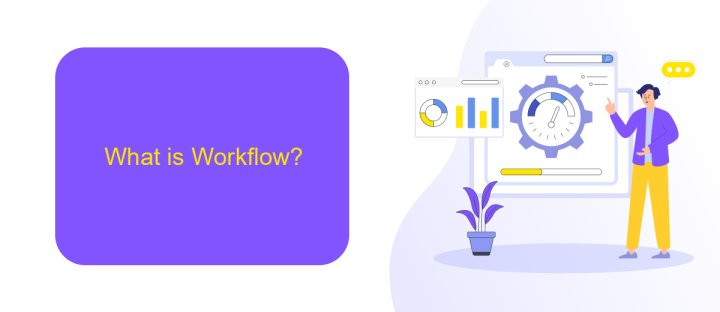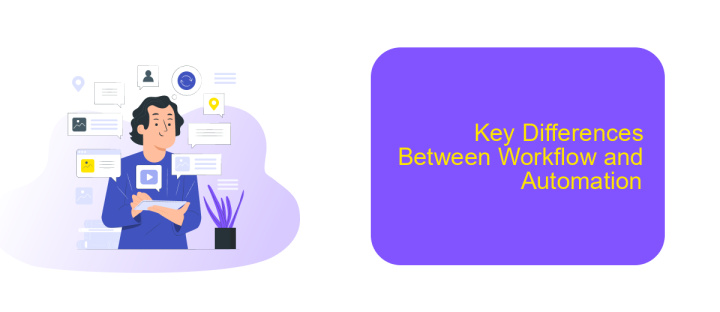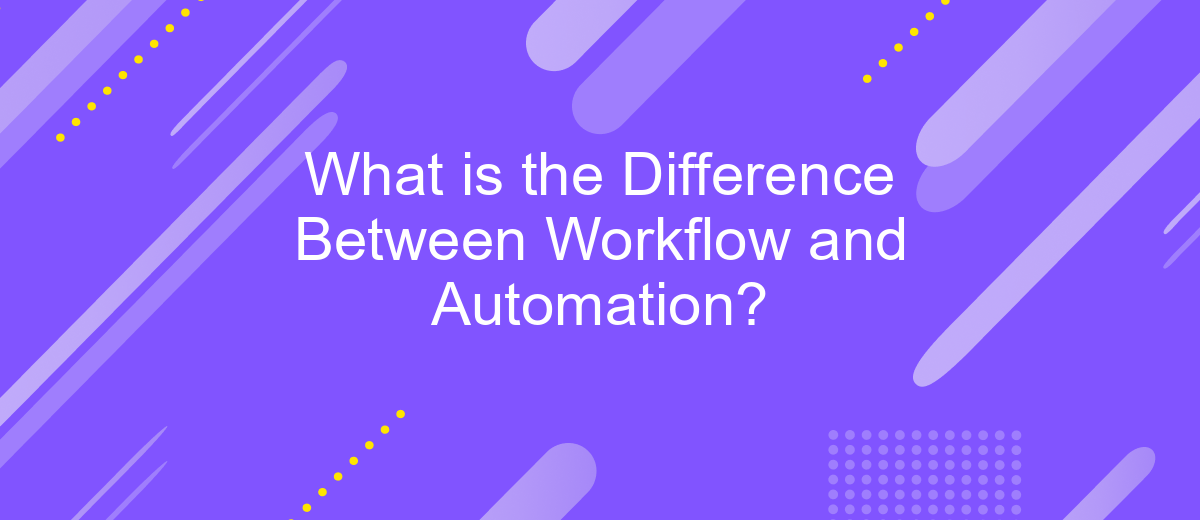What is the Difference Between Workflow and Automation?
Understanding the nuances between workflow and automation is crucial for optimizing business processes. While both terms are often used interchangeably, they represent distinct concepts. Workflow refers to the sequence of tasks that need to be completed for a particular process, whereas automation involves the use of technology to perform these tasks with minimal human intervention. This article explores their differences and how they complement each other in modern business environments.
Introduction
In today's fast-paced business environment, understanding the distinction between workflow and automation is crucial for optimizing efficiency and productivity. While both concepts aim to streamline operations, they serve different purposes and require distinct approaches.
- Workflow: Refers to the sequence of tasks that need to be completed to achieve a specific goal.
- Automation: Involves using technology to perform tasks without human intervention.
By integrating tools like ApiX-Drive, businesses can effectively bridge the gap between workflow and automation. This service allows seamless integration of various applications, ensuring that data flows effortlessly across platforms. Understanding these differences and leveraging the right tools can significantly enhance operational efficiency and drive business success.
What is Workflow?

Workflow refers to the sequence of tasks and processes that are systematically organized to achieve a specific goal within a business or organization. It encompasses the steps, actions, and responsibilities involved in completing a particular task or project. Workflows can be manual or automated, and they are designed to improve efficiency, reduce errors, and ensure consistency in operations. By clearly defining each step and assigning roles, workflows help streamline processes and enhance productivity.
Effective workflow management often involves integrating various tools and services to facilitate seamless communication and coordination. Services like ApiX-Drive enable businesses to automate and optimize their workflows by connecting different applications and systems. With ApiX-Drive, users can set up integrations that automatically transfer data between platforms, reducing the need for manual input and minimizing the risk of errors. This allows teams to focus on more strategic tasks, ultimately driving better results and improved operational efficiency.
What is Automation?

Automation refers to the use of technology to perform tasks with minimal human intervention. This can include anything from simple repetitive tasks to complex processes across various industries. By automating these tasks, businesses can save time, reduce errors, and improve efficiency.
- Task Automation: This involves automating individual tasks, such as sending emails or generating reports.
- Process Automation: This is the automation of entire workflows, ensuring that each step is completed automatically.
- Integration Automation: Tools like ApiX-Drive help businesses integrate various applications and services to streamline data flow and communication between systems.
Implementing automation can significantly enhance productivity and operational efficiency. With the help of services like ApiX-Drive, businesses can easily set up integrations between different software, allowing for seamless data transfer and automated workflows. This not only saves time but also reduces the likelihood of human error, leading to more accurate and reliable outcomes.
Key Differences Between Workflow and Automation

Workflow refers to a sequence of tasks that are designed to achieve a specific outcome. It is a structured process that involves various steps, roles, and responsibilities to complete a project or task. Automation, on the other hand, involves using technology to perform tasks without human intervention, streamlining processes to increase efficiency and reduce errors.
While workflows are about the organization and management of tasks, automation focuses on executing these tasks automatically. Understanding the distinction between these two concepts is crucial for optimizing business processes and improving productivity.
- Purpose: Workflow is about the sequence of tasks, while automation is about executing tasks automatically.
- Human Involvement: Workflows often require human oversight; automation minimizes human intervention.
- Complexity: Workflows can be complex with multiple steps; automation simplifies tasks by handling them programmatically.
- Tools: Workflow management tools organize tasks; automation tools like ApiX-Drive execute tasks seamlessly.
Incorporating both workflows and automation into your business processes can lead to significant improvements in efficiency and accuracy. Tools like ApiX-Drive can help integrate various applications and automate repetitive tasks, allowing your team to focus on more strategic activities.
Conclusion
In summary, understanding the distinction between workflow and automation is crucial for optimizing business processes. Workflow refers to the series of tasks that need to be completed to achieve a specific goal, while automation involves using technology to perform these tasks with minimal human intervention. By clearly defining workflows and strategically implementing automation, businesses can enhance efficiency, reduce errors, and save time.
For organizations looking to streamline their operations, leveraging tools like ApiX-Drive can be immensely beneficial. ApiX-Drive offers seamless integration capabilities, allowing different applications to communicate and work together effortlessly. This not only simplifies the automation process but also ensures that workflows remain smooth and uninterrupted. Ultimately, combining well-structured workflows with robust automation solutions can lead to significant improvements in productivity and overall business performance.
- Automate the work of an online store or landing
- Empower through integration
- Don't spend money on programmers and integrators
- Save time by automating routine tasks
FAQ
What is the main difference between workflow and automation?
Can workflows exist without automation?
How does automation benefit workflows?
Can you give an example of a tool that helps with workflow automation?
Is it necessary to automate every workflow?
Apix-Drive will help optimize business processes, save you from a lot of routine tasks and unnecessary costs for automation, attracting additional specialists. Try setting up a free test connection with ApiX-Drive and see for yourself. Now you have to think about where to invest the freed time and money!


